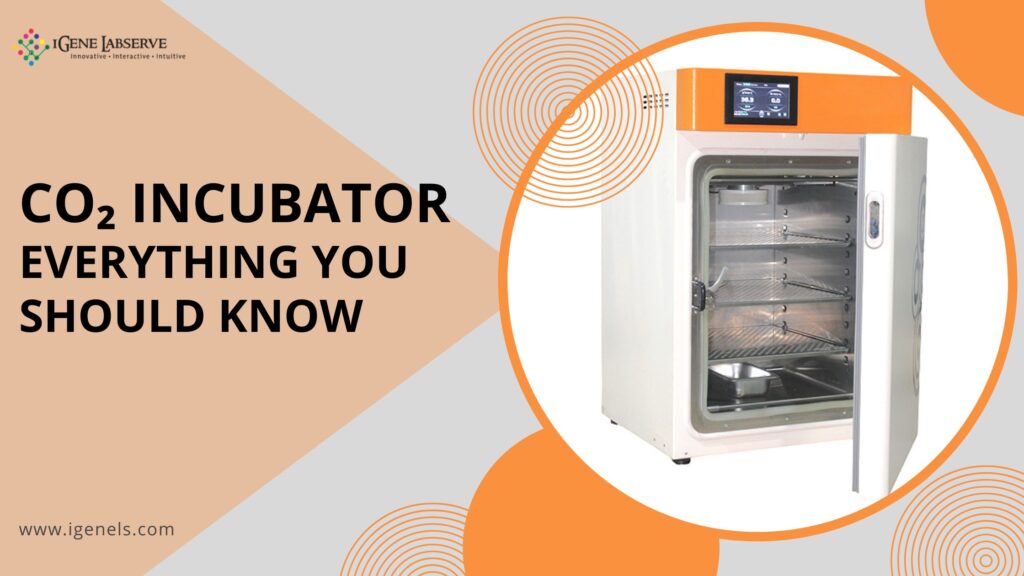When it comes to cultivating cell cultures, precision is everything. A CO₂ incubator is an indispensable tool in laboratories focused on tissue engineering, microbiology, IVF, and pharmaceutical testing. It offers a controlled environment that ensures your samples are nurtured in optimal conditions. In this blog, we’ll walk you through the essentials of a CO₂ incubator—from its core concept to its functionality, types, components, pros and cons, and best usage practices.
Concept of a CO₂ Incubator
A CO₂ incubator is a specialized laboratory device designed to maintain stable conditions of temperature, humidity, and carbon dioxide (CO₂) concentration. These controlled parameters mimic the natural conditions inside the human body, providing an ideal environment for the growth of cells, tissues, and microorganisms.
Primarily used in biomedical research, pharmaceutical testing, and IVF labs, a CO₂ incubator plays a vital role in maintaining sterility and supporting sensitive cultures such as mammalian cells.

Types of CO₂ Incubators
CO₂ incubators come in various configurations based on design, sterilization method, and CO₂ control technology. The main types include:
1. Water Jacketed CO₂ Incubators
- Use heated water that surrounds the chamber for temperature uniformity.
- Offers stable temperature control but is heavier and requires more maintenance.
2. Air Jacketed CO₂ Incubators
- Use heated air for temperature regulation.
- Lighter and quicker to heat up compared to water-jacketed models.
3. Direct Heat CO₂ Incubators
- Use multiple heaters inside the chamber for faster temperature recovery.
- Often paired with high-efficiency HEPA filtration and UV sterilization.
4. Infrared (IR) CO₂ Incubators
- Use IR sensors for accurate and quick CO₂ level detection.
- Highly responsive to CO₂ fluctuations, ideal for sensitive experiments.
How Are CO₂ Incubators Made?
CO₂ incubators are constructed with corrosion-resistant stainless steel chambers, designed to be easy to clean and sterilize. Key manufacturing features include:
- Double-walled insulation for temperature consistency.
- Gasket-sealed glass doors for visibility without compromising internal conditions.
- Integrated sensors and controllers for monitoring temperature, humidity, and gas concentration.
- HEPA filters or UV lights to minimize contamination.
The design emphasizes contamination control, uniformity, and ease of maintenance.
Why Should You Use a CO₂ Incubator?
Using a CO₂ incubator is essential when working with biological cultures that require:
- Stable CO₂ levels (typically 5%) for maintaining pH in culture media.
- Precise temperature (usually 37°C) to mimic physiological conditions.
- High humidity (95%) to prevent media evaporation and cell desiccation.
- Contamination control to protect delicate specimens.
In short, a CO₂ incubator provides an optimized microenvironment for critical biological processes.
How Does a CO₂ Incubator Function?
Here’s how a typical CO₂ incubator operates:
- CO₂ Sensor detects the gas concentration inside the chamber.
- Gas control system adjusts CO₂ input to maintain the desired level.
- Temperature sensors and heating elements keep the chamber at a stable temperature.
- Humidity pan or integrated humidifiers ensure sufficient moisture.
- Air circulation system distributes heat and gas evenly across the chamber.
The internal environment is constantly monitored and adjusted to maintain optimal and stable growth conditions.
Parts of a CO₂ Incubator
A modern CO₂ incubator comprises the following essential components:
- Control Panel – Sets and displays temperature, CO₂, and humidity levels.
- CO₂ Sensor – Monitors carbon dioxide concentration.
- Heating Elements – Regulate internal temperature.
- Inner Chamber – Usually made of stainless steel for easy cleaning.
- Door and Inner Glass Door – Prevents temperature loss and contamination.
- Humidity Reservoir or System – Maintains adequate humidity levels.
- HEPA Filter or UV Sterilizer – Ensures air purity inside the chamber.
- Alarm System – Alerts users to fluctuations or equipment failure.
Advantages and Disadvantages of a CO₂ Incubator
Advantages:
Provides consistent and precise environmental control.
Reduces risk of contamination through HEPA filters or sterilization systems.
Supports growth of sensitive cell lines.
Modern models offer easy data logging and remote monitoring.
Disadvantages:
High initial and maintenance costs.
Risk of contamination if not cleaned regularly.
Dependence on CO₂ supply—interruptions can affect cultures.
Requires careful calibration and monitoring.
Dos and Don’ts of Using a CO₂ Incubator
Dos:
Calibrate sensors regularly.
Clean and disinfect the chamber weekly.
Use sterile water in humidity pans.
Keep the door closed during operation to maintain internal stability.
Don’ts:
Don’t place uncovered media inside—this increases contamination risks.
Don’t overload the incubator—it affects air circulation.
Don’t ignore alarms—always investigate issues promptly.
Don’t store chemicals inside the incubator.
Following best practices enhances incubation accuracy and extends the life of your device.
The Bottom Line
A CO₂ incubator is more than just a lab tool—it’s the heart of many cell culture labs, offering a safe and stable environment for growth and experimentation. Whether you’re conducting stem cell research, IVF treatments, or pharmaceutical testing, investing in the right type of CO₂ incubator and maintaining it properly can significantly impact your outcomes.

